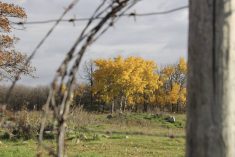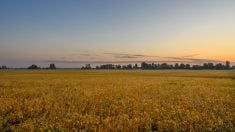Cattle producers leasing Crown land for grazing in Saskatchewan won’t see a rate hike this year and may be eligible for a significant rate cut.
The provincial government announced Wednesday it has frozen the rates charged to producers who lease Crown grazing land in 2023 at their 2022 level. The freeze will apply to all grazing leases across the province, affecting about six million acres of Crown land in total.
Furthermore, producers who have to reduce their stocking rates on Crown land due to “ongoing dry conditions” will be eligible for a rent cut of up to 50 per cent.
Read Also

Catch up with the Western Producer Markets Desk
The Western Producer Markets Desk provides daily updates on agricultural markets, with recent video commentary including looks into canola, wheat, cattle and feed grains.
Crown grazing rates in Saskatchewan are set each year using a formula based on fall cattle prices and the long-term stocking rate of each parcel. The rent cuts would apply where a lessee or pasture association must reduce the number of animals grazing on a Crown lease by 20 per cent or more, compared to the parcel’s approved long-term carrying capacity.
The 2023 rate cut would match the reduction in carrying capacity, ranging from a 20 per cent rate reduction up to the maximum 50 per cent.
“Saskatchewan’s livestock sector is facing increasing costs of production in addition to successive years of low precipitation in many areas of the province,” provincial Agriculture Minister David Marit said in a release.
The rate freeze and cuts, he said, “will assist producers through the current challenges while supporting the continued stewardship and productivity of the land.”
Shellbrook cattle producer Arnold Balicki, chair of the Saskatchewan Cattlemen’s Association, on Wednesday hailed the province’s announcement as “something many of our ranchers have been calling for.”
Neighbouring Manitoba last fall announced rent reductions for perennial forage growers leasing Crown land in 2023 and the following two years, citing “extreme weather conditions” ranging from excess moisture in 2022 to severe drought the previous two years. — Glacier FarmMedia Network
















